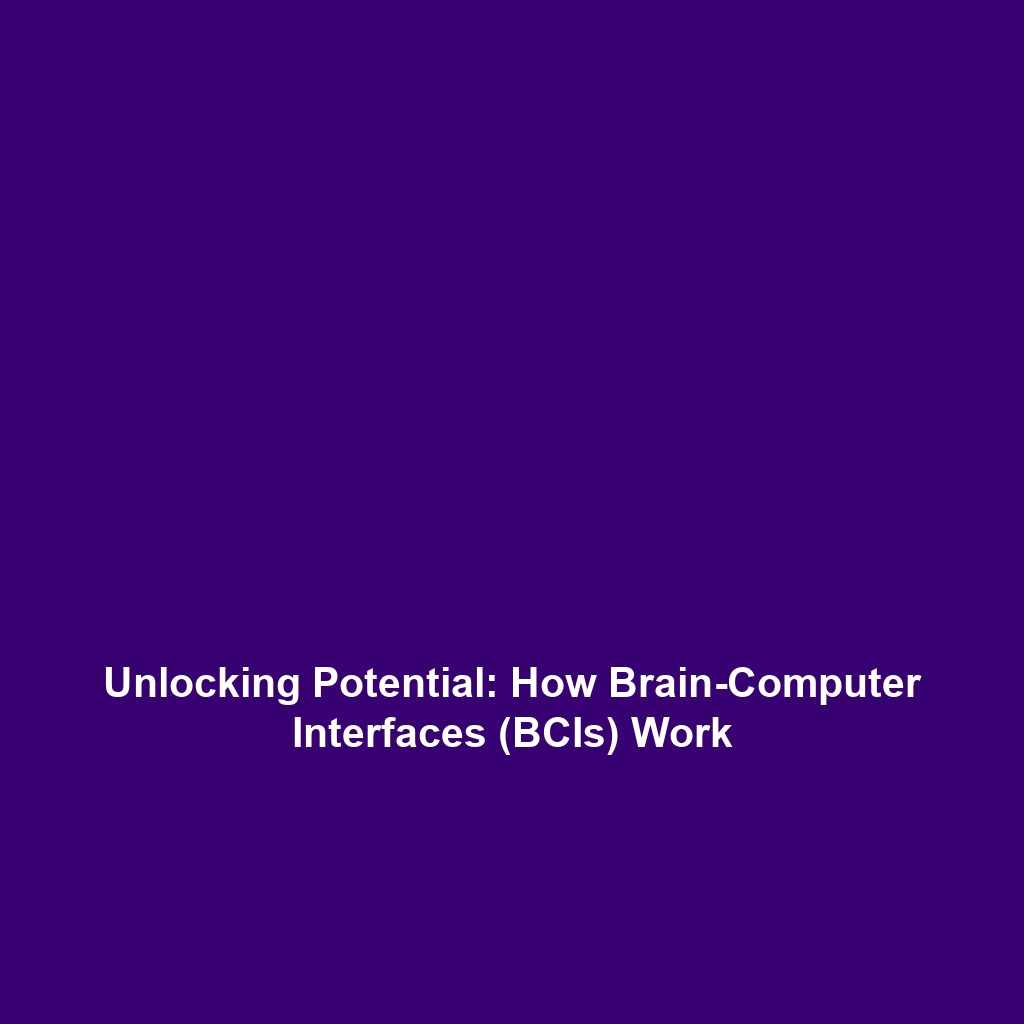<>
Understanding How Brain-Computer Interfaces (BCIs) Work
Introduction: Brain-Computer Interfaces (BCIs) represent a groundbreaking technological advancement that connects the human brain to external devices, providing a pathway for communication and control without the need for physical interaction. Understanding how BCIs work is essential in today’s rapidly evolving tech landscape, where their applications stretch from medical rehabilitation to gaming. This article delves into the intricacies of BCIs and their significance, offering insights into their underlying principles and broad implications in a variety of fields.
Key Concepts of How BCIs Work
The operation of Brain-Computer Interfaces hinges on several key concepts:
- Signal Acquisition: BCIs typically collect brain activity signals using electrodes placed on the scalp or implanted within the brain tissue. These signals can be in the form of electroencephalography (EEG), electrocorticography (ECoG), or intracortical recordings.
- Signal Processing: Once acquired, the raw brain signals undergo processing to filter noise and enhance relevant information. This step is crucial as it transforms the complex brain signals into interpretable data for further analysis.
- Feature Extraction: In this phase, specific traits or patterns indicative of the user’s intent are identified. This process utilizes algorithms to discern meaningful signals corresponding to thoughts or commands.
- Translation Algorithms: The identified features are then translated into commands for external devices, enabling users to operate systems through mere thought processes.
Applications and Real-World Uses of BCIs
Understanding how BCIs work opens doors to an array of practical applications:
- Medical Rehabilitation: BCIs play a significant role in aiding patients with movement disabilities, enabling them to control prosthetic limbs or wheelchairs through thought alone.
- Communication Aids: For individuals with severe speech impairments, BCIs provide a means to communicate by translating brain signals into written text or speech.
- Gaming and Entertainment: Some gaming companies are exploring BCIs to create immersive experiences by allowing players to control gaming environments through their mental focus.
Current Challenges in How BCIs Work
Despite their potential, several challenges hinder the full realization of BCIs:
- Signal Quality: Ensuring consistent and reliable signal acquisition is vital, yet challenging due to interference from external factors.
- Invasiveness: Many high-performance BCIs require invasive methods, posing surgical risks and complications that limit usability.
- Ethical Concerns: The possibility of mind-reading and unauthorized brain data access raises significant ethical questions that need addressing.
Future Research and Innovations in BCIs
The future of understanding how BCIs work looks promising, with several innovations on the horizon:
- Advancements in Non-Invasive Technology: Ongoing research aims to enhance non-invasive BCI technologies to offer greater accessibility and comfort.
- AI Integration: Combining artificial intelligence with BCIs could lead to smarter systems that better understand and predict user intentions.
- Neurofeedback Enhancements: Further exploration into neurofeedback applications may improve mental health treatments and cognitive training.
Conclusion
In summary, understanding how BCIs work is pivotal in realizing their vast potential for transforming lives and industries alike. As research progresses, we can expect to witness groundbreaking developments and applications of BCIs that promise to enhance human capabilities far beyond our current limitations. For those interested in exploring more about Brain-Computer Interfaces, consider reading our articles on Applications of BCIs and Challenges in BCI Research.
